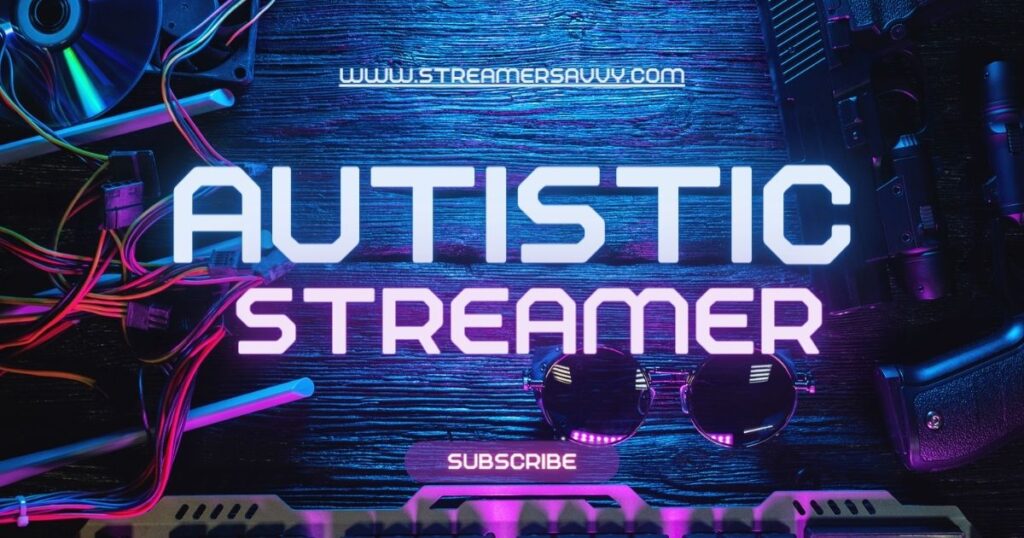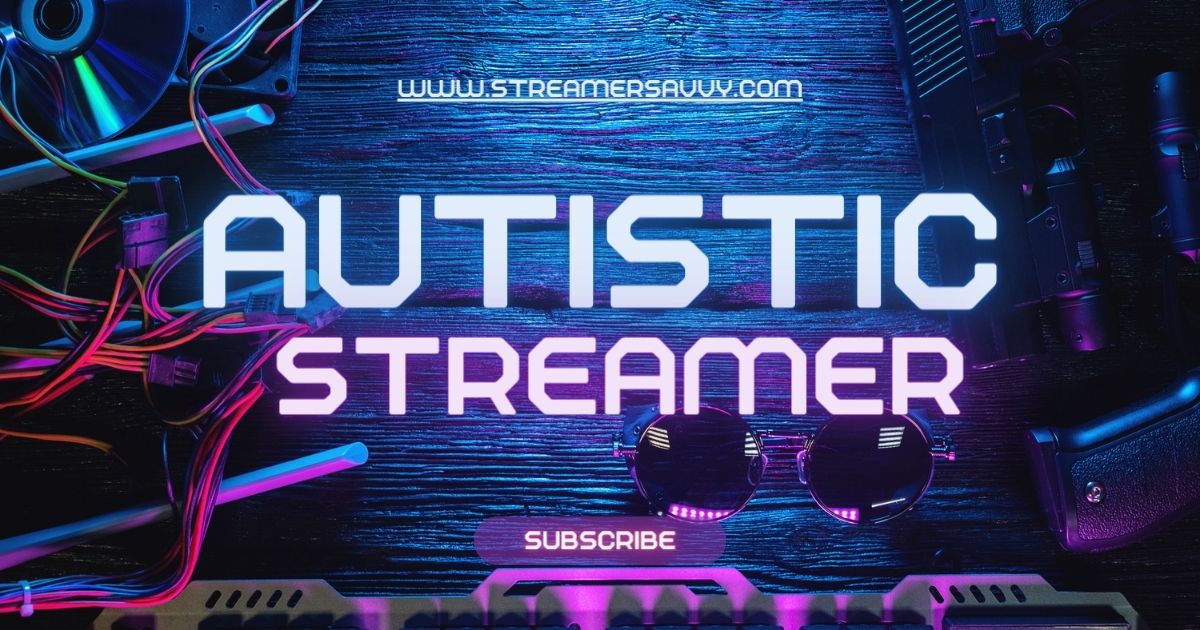Autistic Streamer

In this comprehensive guide, we’ll delve into the world of sketching through the eyes of an autistic streamer. We’ll cover essential techniques, tips, and unique perspectives that make their art stand out. Let’s explore how sketching can be both a passion and a form of expression for those on the autism spectrum.
What is Sketching?
Sketching is a form of drawing that captures the essence of a subject. It involves quick, loose lines and is often used as a preliminary step in the creation of more detailed artwork. Whether you’re a beginner or an experienced artist, sketching is a fundamental skill that helps develop your artistic abilities.
Benefits of Sketching
- Relaxation: Provides a calming effect and reduces stress.
- Creativity: Enhances imaginative thinking.
- Communication: Helps in expressing emotions and ideas visually.
- Practice: Improves hand-eye coordination and drawing skills.
Tools for Sketching
Before diving into techniques, it’s essential to have the right tools. Here’s a basic list:
- Pencils: Various grades from H (hard) to B (soft).
- Erasers: Kneaded and vinyl erasers for different effects.
- Paper: sketchbooks, loose sheets, or any suitable surface.
- Pens: fine liners or ink pens for detailed work.
- Other Tools: Blending stumps, rulers, and charcoal.
8 Powerful Sketching Techniques
1. Gesture Drawing
Gesture drawing is all about capturing the motion and posture of a subject. This technique focuses on the movement rather than the details, helping artists understand the dynamics and flow of the figure.
How to Practice Gesture Drawing
- Set a Timer: Use a timer to draw quick sketches, starting with 30 seconds to 2 minutes.
- Focus on Form: Concentrate on the overall form and flow rather than details.
- Use Continuous Lines: Draw using continuous lines to capture the movement.
| Pros | Cons |
|---|---|
| Improves speed and fluidity | May overlook details |
| Enhances understanding of movement | It can be challenging initially |
| Encourages loose and dynamic drawing |
Practical Example
Imagine sketching a dancer. Instead of focusing on the details of the costume, concentrate on capturing the fluidity and grace of their movements. This will help in understanding the essential dynamics of the pose.
2. Contour Drawing
Contour drawing involves sketching the outline of a subject. It helps improve observation skills and hand-eye coordination, making it an excellent exercise for developing precise and deliberate lines.
Steps for Contour Drawing
- Observe Closely: Look at the subject closely, noting the edges and shapes.
- Draw the Outline: Sketch the outline without lifting the pen from the paper.
- Focus on Edges: Pay attention to the edges and contours of the subject.
Practical Example
When drawing a leaf, focus on the edges and the intricate shapes along the border. This practice enhances your ability to notice and replicate fine details.
3. Blind Contour Drawing
This is a variation of contour drawing where you don’t look at your paper while drawing. Blind contour drawing sharpens observation skills and builds confidence, as it forces you to trust your hand and eyes.
Tips for Blind Contour Drawing
- Eyes on the Subject: Keep your eyes on the subject at all times.
- Draw Slowly: Move your hand slowly and steadily.
- Embrace Mistakes: Don’t worry about mistakes; they’re part of the learning process.
| Pros | Cons |
|---|---|
| Improves observation skills | Can produce distorted results |
| Builds confidence | Challenging for beginners |
| Encourages focus on the subject |
Practical Example
Try drawing your hand without looking at the paper. Focus solely on the contours and shapes of your fingers and hands, enhancing your observational skills.
4. Hatching and Cross-Hatching
These techniques involve drawing parallel lines to create texture and shading. Cross-hatching adds another layer of lines in the opposite direction, allowing for richer depth and dimension in your sketches.
How to Use Hatching and Cross-Hatching
- Determine the Light Source: Identify the light source to understand where shadows fall.
- Use Parallel Lines: Start with parallel lines to shade areas.
- Cross the Lines: Add another layer of lines in the opposite direction for deeper shadows.
| Pros | Cons |
|---|---|
| Adds texture and depth | Time-consuming |
| Enhances understanding of light and shadow | Requires practice |
| Versatile for various subjects |
Practical Example
Sketch a sphere and practice hatching to create a gradient from light to dark. Cross-hatching can be used to intensify the darkest areas, providing a three-dimensional effect.
5. Stippling
Stippling uses dots to create shading and texture. It’s a meticulous and time-consuming technique, but it allows for a high level of detail and a unique texture.
Stippling Steps
- Use a Pen: Dots are best created with a fine pen.
- Cluster the Dots: Place dots closer together for darker areas.
- Space the Dots: Spread dots further apart for lighter areas.
| Pros | Cons |
|---|---|
| Creates detailed textures | Very time-consuming |
| Allows precise shading | Requires patience |
| Unique aesthetic |
Practical Example
Draw an apple using stippling. Cluster the dots in the shadowed areas to create depth, and space them out in the lighter regions for a realistic effect.
6. Scribbling
Scribbling is a loose, free-form technique that adds energy and movement to sketches. It’s excellent for quick studies and capturing the essence of a subject.
How to Scribble Effectively
- Free Movement: Let your hand move freely without worrying about precision.
- Vary Pressure: Change the pressure on your pencil to create different textures.
- Build Textures: Use scribbles to build up textures and forms.
| Pros | Cons |
|---|---|
| Quick and expressive | Can be chaotic |
| Captures energy and movement | Less detailed |
| Good for rough sketches |
Practical Example
Try scribbling a tree. Focus on the general shape and texture of the leaves and bark, using loose, energetic lines to convey the natural form.
7. Negative Space Drawing
This technique focuses on drawing the space around the subject rather than the subject itself. Negative space drawing helps improve the understanding of shapes and their relationships.
Steps for Negative Space Drawing
- Identify Negative Spaces: Look for the spaces around and between objects.
- Draw the Shapes: Sketch the shapes of these spaces.
- Define the subject: Use the negative space to define the subject.
| Pros | Cons |
|---|---|
| Enhances understanding of shapes | Can be counterintuitive |
| Improves composition skills | It may be challenging at first |
| Helps in seeing the whole picture |
Practical Example
When drawing a chair, focus on the spaces between the legs and the backrest. By sketching these spaces, you can better understand the overall form and proportions of the chair.
8. Using References
Using references can help achieve accuracy and realism in sketches. Whether it’s a photo or a live model, references provide valuable information on proportions, details, and textures.
How to Use References
- Find Quality Images: Choose clear and detailed reference images.
- Analyze Proportions: Study the proportions and details carefully.
- Incorporate Details: Use the references to add realism to your sketches.
| Pros | Cons |
|---|---|
| Enhances accuracy | Can limit creativity |
| Provides detailed information | Dependent on finding good references |
| Useful for realistic drawings |
Practical Example
Use a photo of a cat as a reference. Study the proportions, fur patterns, and lighting, and incorporate these details into your sketch to achieve a realistic portrayal.
SERP Questions
What is Wrong with Sketch Streamer?
Many people search for information about the sketch streamer, wondering about any underlying conditions or disabilities. It’s important to approach such inquiries with sensitivity and respect, recognizing the unique talents and perspectives they bring to their art.
Is Sketch the Streamer Autistic?
Yes, the sketch streamer is autistic, and this aspect significantly influences their unique artistic style and approach. Autism can enhance an artist’s attention to detail and creativity, resulting in distinctive and compelling artwork.
What disability does Sketch have?
Apart from autism, the sketch streamer does not have any other known disabilities. Their autism brings unique perspectives and skills to their sketching, which are evident in the intricate details and imaginative compositions of their work.
How does autism affect sketching?
Autism can affect sketching by enhancing attention to detail and providing a unique perspective on the world. Artists with autism often have a heightened sense of observation and creativity, which translates into highly detailed and imaginative artwork.
Who is Sketch the Streamer?
Sketch the streamer is an autistic artist known for their engaging sketching techniques and live streams. They share their art and experiences with a broad audience, providing valuable insights into the world of sketching and autism.
Frequently Asked Questions
1. Does Sketch the Streamer Have Autism?
Yes, sketch the streamer is on the autism spectrum, which adds a distinctive touch to their artistic work. Autism often enhances an artist’s attention to detail and creative thinking, contributing to their unique style.
2. What is Sketch Streamer’s Real Name?
sketch streamer’s real name is Kylie Cox. They are
known for their captivating sketches and engaging online presence, sharing their artistic journey with a global audience.
3. What’s Sketch Streamer’s Net Worth?
While exact figures vary, Kylie Cox, also known as the sketch streamer, has an estimated net worth in the public domain, attributed to her successful streaming and art careers. Their unique approach to art and engaging personalities have garnered a significant following and financial success.
4. What Techniques Does the Sketch Streamer Use?
The sketch streamer uses various techniques, including gesture drawing, contour drawing, hatching, and more, to create their unique artwork. These techniques help in capturing the essence and details of their subjects, making their sketches stand out.
5. How Can I Learn to Sketch Like the Sketch Streamer?
You can learn by following their streams, practicing the techniques they use, and staying dedicated to improving your skills over time. Observing their process, asking questions, and engaging with the sketching community can also provide valuable insights and inspiration.
Conclusion
Sketching is a versatile and expressive art form that benefits greatly from diverse perspectives, including those of autistic individuals. The sketch streamer, Kylie Cox, exemplifies how autism can bring a unique and valuable approach to art. By mastering techniques like gesture drawing, contour drawing, and stippling, you too can enhance your sketching skills. Whether you’re an aspiring artist or just looking to improve your technique, embracing these methods can help you create more dynamic and engaging artwork.
Remember, the journey of sketching is about exploration and enjoyment. So, grab your sketchpad and start drawing today! Through practice, observation, and experimentation, you’ll find your own unique voice in the world of sketching, just like the sketch streamer.



